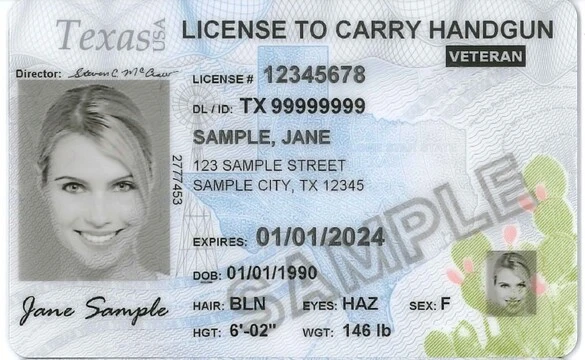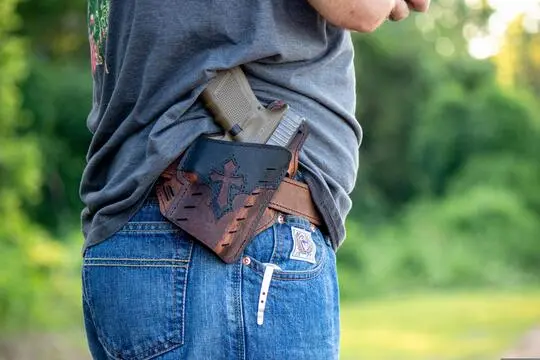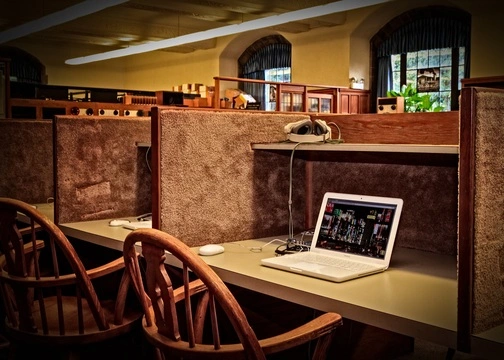Concealed carry, also known as CCW (Carrying a Concealed Weapon) or LTC (License to Carry) in Texas, is a serious responsibility that requires thorough preparation and understanding. This article aims to guide you through the essential aspects of concealed carry, from understanding the basics of obtaining a permit in Texas to choosing the right firearm and holster, building confidence in carrying, and understanding the importance of carrying a round in the chamber for self-defense.
Article Summary
- Concealed carry, or CCW/LTC, is a serious responsibility that requires thorough preparation and understanding.
- Before getting a concealed carry permit in Texas, it's crucial to understand the laws, costs, and processes.
- Choosing the right firearm and holster is a personal decision that should take into account several factors, including the gun's size, weight, caliber, and your comfort and proficiency with it.
- Confidence is a key factor in concealed carry. Regular range time, professional instruction, and practice drawing and reholstering your firearm can all help increase your confidence.
- Carrying a round in the chamber can be crucial in a self-defense situation, where seconds matter.
- Additional considerations for concealed carry include ongoing education and training, mental preparedness, physical fitness, regular maintenance and cleaning of your firearm, and building a supportive community.
- The article also addressed some frequently asked questions about concealed carry, providing further insights into the topic.
Understanding the Basics: What to Know Before Getting Your License to Carry (LTC) in Texas
Before you embark on your journey to becoming a responsible concealed carrier, it's crucial to understand the laws, costs, and processes associated with obtaining a CCW permit in Texas. Texas is a shall-issue state with concealed weapons permits issued at the state level by the Department of Public Safety.
Texas Laws on Concealed Carry
In Texas, the law allows for both open carry and concealed carry of a handgun if you have a valid LTC. However, even with an LTC, some places are off-limits, including schools, polling places, courts, racetracks, and secured airport areas.
Cost and Process of Getting a Permit
Obtaining a concealed carry permit in Texas involves several steps, including completing a handgun proficiency course, submitting an application, and passing a background check. The cost for the application fee can vary, so it's advisable to check the current fees on the Texas Department of Public Safety's website.
Choosing the Right Firearm for Concealed Carry
Choosing the right firearm is a personal decision that should take into account several factors, including the gun's size, weight, caliber, and your comfort and proficiency with it.
Factors to Consider
When choosing a firearm for concealed carry, consider its size and weight. A smaller, lighter gun is easier to conceal and carry but may be harder to shoot accurately. The firearm's caliber is also important. While larger calibers have more stopping power, they also have more recoil, which can make them more difficult to handle.
Popular Choices and Their Pros and Cons
Some popular choices for concealed carry firearms include the Glock 19, Smith & Wesson M&P Shield, and the SIG Sauer P365. Each of these has its pros and cons, so it's important to try out different options to see which one feels the most comfortable and reliable for you.
The Importance of a Comfortable Holster in Concealed Carry
Just as important as your firearm is the holster you choose to carry it in. A good holster provides a secure and consistent platform for your firearm, ensuring that it's always in the same place and position, allowing for a smooth and efficient draw.
Different Types of Holsters
There are many types of holsters available, including inside-the-waistband (IWB), outside-the-waistband (OWB), shoulder holsters, and ankle holsters. Each type has its advantages and disadvantages, and the best choice depends on your personal comfort, your typical attire, and the specific circumstances in which you'll be carrying.
Tips for Choosing a Comfortable Holster
When choosing a holster, look for one that securely holds your firearm, covers the trigger to prevent accidental discharges, and allows for a smooth draw. The holster should be comfortable to wear for extended periods and should keep your firearm concealed under your normal clothing.
The Role of Confidence in Concealed Carry
Confidence is a key factor in concealed carry. If you're not confident in your ability to use your firearm safely and effectively, you're likely to be hesitant and unsure in a situation where you need to defend yourself or others.
Building Confidence in Carrying a Firearm
Building confidence in carrying a firearm comes with training and practice. Regular range time, professional instruction, and practice drawing and reholstering your firearm can all help increase your confidence.
The Connection Between Confidence and Safety
Confidence and safety go hand in hand when it comes to concealed carry. A confident carrier is a safe carrier, as they know how to handle their firearm safely, are aware of their surroundings, and are prepared to act decisively and effectively if necessary.
Why Carrying a Round in the Chamber is Crucial for Self Defense
Carrying a round in the chamber of your firearm can be a controversial topic among new concealed carriers. However, in a self-defense situation, seconds matter, and the time it takes to chamber a round can be the difference between life and death.
Understanding the Importance
In a high-stress situation, your fine motor skills can deteriorate, making it difficult to chamber a round quickly and smoothly. Having a round already in the chamber eliminates this concern and ensures your firearm is ready to use as soon as you draw it.
Safety Measures When Carrying a Round in the Chamber
While carrying a round in the chamber, safety should be your top priority. This means using a holster that covers the trigger to prevent accidental discharges, keeping your finger off the trigger until you're ready to shoot, and regularly maintaining your firearm to ensure it's in good working order.
Additional Considerations for Concealed Carry
Beyond the basics of choosing a firearm and holster, and understanding the importance of confidence and readiness, there are additional factors that can contribute to your success and safety as a concealed carrier.
Training and Education
While obtaining your LTC is a significant step, it's just the beginning of your journey. Ongoing education and training are crucial for maintaining and improving your skills. Consider enrolling in advanced concealed carry courses, self-defense training, and legal seminars to stay informed about the laws and best practices related to concealed carry.
Mental Preparedness
Carrying a firearm for self-defense requires a certain level of mental preparedness. This includes understanding the gravity of the potential use of your firearm, being aware of your surroundings, and being prepared to make split-second decisions in high-stress situations. Regular training can help prepare you mentally for these scenarios.
Physical Fitness
While it may not be the first thing that comes to mind when thinking about concealed carry, physical fitness can play a role in your ability to effectively carry and use a firearm. Strength, flexibility, and cardiovascular health can all impact your ability to handle a firearm, particularly in a high-stress situation. Regular exercise can help improve these aspects of your physical fitness.
Regular Maintenance and Cleaning of Your Firearm
Just like any other tool, your firearm requires regular maintenance to function reliably. This includes regular cleaning, particularly after range sessions, as well as periodic inspections for wear and tear. Familiarize yourself with the maintenance requirements of your specific firearm and make sure to follow them.
Building a Supportive Community
Finally, consider seeking out a community of other concealed carriers, whether that's in-person or online. This can provide a valuable source of advice, encouragement, and camaraderie. You can learn from the experiences of others, share your own insights, and stay motivated to continue your training and education.
A Deeper Dive into Concealed Carry Concepts
To further enhance your understanding and preparation for concealed carry, let's delve deeper into some key concepts and considerations.
The Role of Situational Awareness
Situational awareness is a key aspect of self-defense and concealed carry. It involves being aware of your surroundings, understanding the intent and actions of people around you, and being able to predict potential threats before they materialize. Regular training and practice can help improve your situational awareness skills.
The Importance of Concealment
Concealment is a crucial aspect of concealed carry. The whole point of carrying concealed is to avoid drawing attention to the fact that you're armed. This requires careful consideration of your clothing, holster, and carry position to ensure your firearm remains hidden from view.
Understanding and Respecting the Law
As a concealed carrier, it's your responsibility to understand and respect the laws related to concealed carry in your state. This includes knowing where you can and can't carry, understanding the use of force laws, and being aware of any changes in the law.
The Ethics of Concealed Carry
Carrying a firearm for self-defense comes with a significant ethical responsibility. You must be prepared to make life-and-death decisions in a split second, and you must be willing to accept the potential consequences of those decisions.
The Role of Practice and Training
Regular practice and training are crucial for maintaining and improving your concealed carry skills. This includes not only shooting at the range but also practicing drawing and reholstering your firearm, dry-fire practice, and scenario-based training.
Conclusion
Concealed carry is a significant responsibility that requires careful consideration, preparation, and ongoing training. By understanding the laws in your state, choosing the right firearm and holster, building your confidence, and understanding the importance of carrying a round in the chamber, you can carry with confidence and be prepared to defend yourself and others if necessary. Remember, the journey doesn't end with obtaining your LTC - it's just the beginning.




